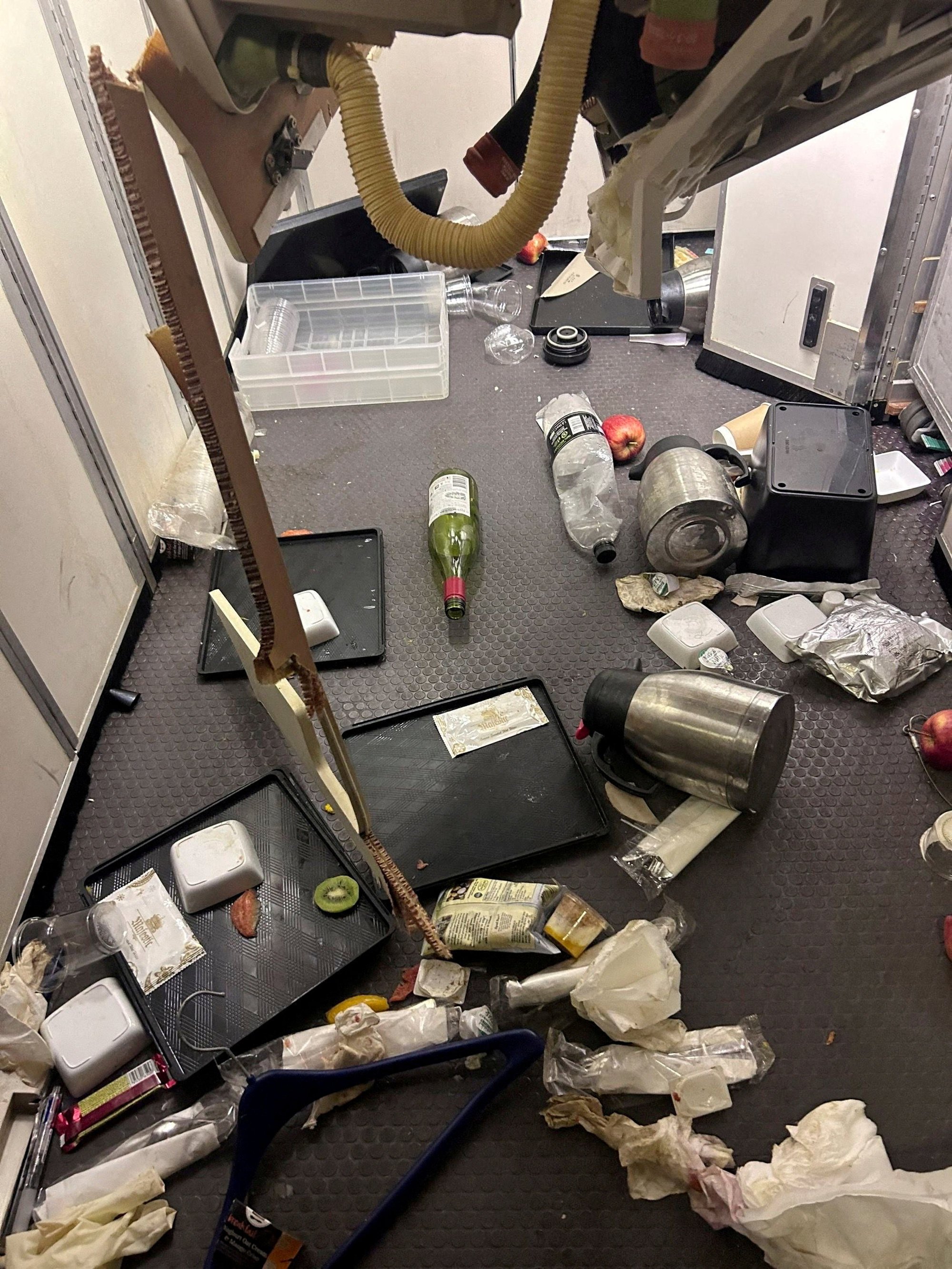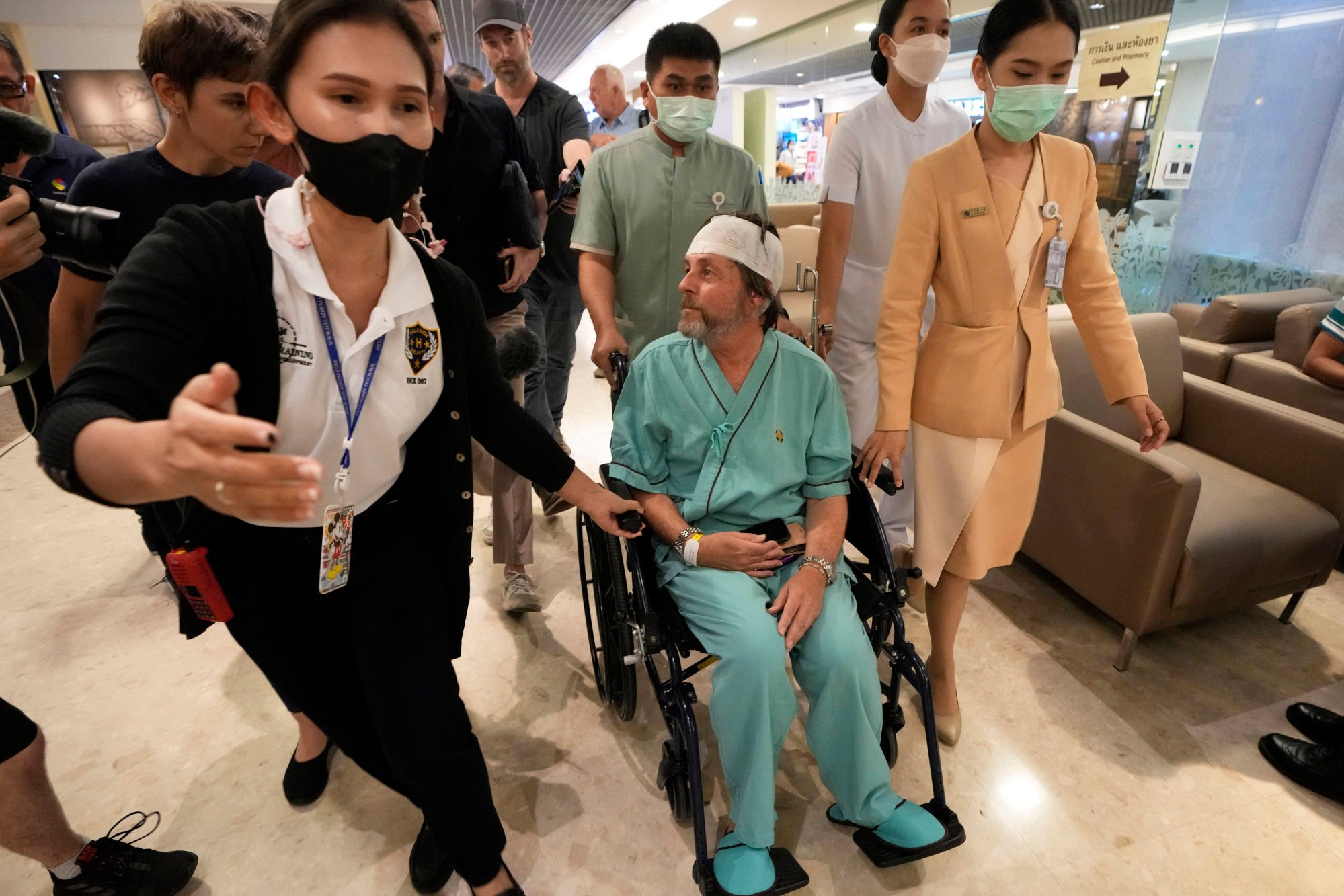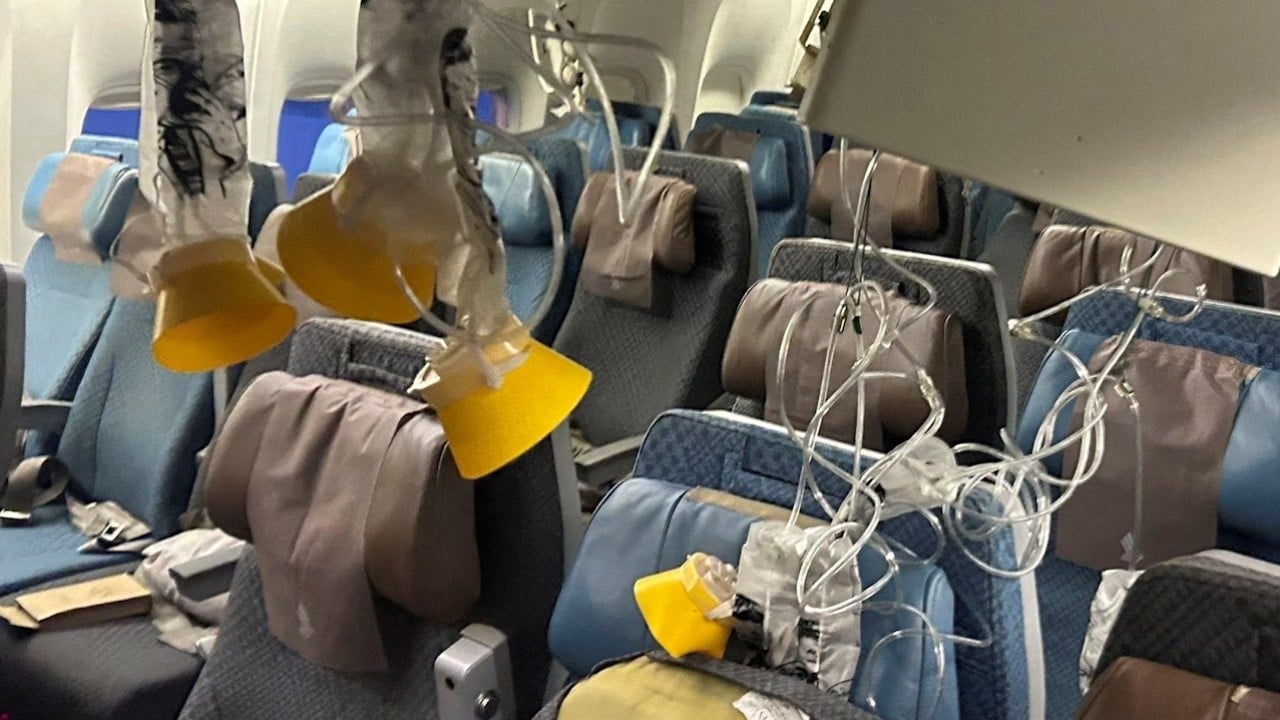
Singapore Airlines turbulence: doctor couple on SQ321 describes ‘mass casualty scenario’, aiding others despite injuries
- Junior doctors Amos Chan and Ade Tan were flying back from their honeymoon when their plane was hit with catastrophic turbulence that injured dozens
- Despite their own injuries, they helped treat fellow passengers, including attempts to resuscitate a British man who died of a suspected heart attack
When junior doctor Amos Chan woke up while on his flight from London to Singapore, he was lying in the aisle two rows behind his seat. That was when he realised he must have passed out.
The couple, both 28 years old, told This Week In Asia on Friday they were waiting for their breakfast on the flight to be served when the horror struck, throwing passengers, including Chan, out of their seats.
Tan, who will start her residency in paediatrics in July, said: “It was a mass casualty scenario that we were taught in school, but have never actually seen for ourselves because we rarely see such mass trauma casualties in Singapore.”

One passenger died of a suspected heart attack, while at least 40 were injured. The plane made an emergency landing in Bangkok.
Moments before the turbulence struck, Tan recalled the fasten seat belt sign had been switched on and she watched her husband buckling himself in. She already had her seat belt on.
“The next thing I knew we dropped, and he was gone from his seat,” Tan said.
“When I came to, I wasn’t in any pain, so I don’t think I passed out because I hit anything but just from the g-force,” said Chan.
He was then able to walk back to his wife, who was calling out for him.
“After I found him, we were more focused on how we could help. It was like a mass casualty scene. There were oxygen masks hanging, people had blood on their heads, there were a lot of people lying in the aisle moaning in pain and saying they couldn’t feel their legs,” recalled Tan.
“It was quite hectic and all of us had to assess who to attend to first,” she added.
The cabin crew had called for medically trained personnel on board the plane to make themselves known, and the couple did not hesitate.
“It was an all hands on deck situation because there were so many people injured,” said Tan.
Tan went forward to help Briton Geoff Kitchen, 73, who had collapsed and was unconscious.
She recalled two other doctors and an intensive care unit nurse tending to him while she called for passengers who knew cardiopulmonary resuscitation (CPR).
Tan helped to ventilate Kitchen with a bag-valve-mask while another doctor was focused on getting venous access to administer him medication. She noted there was a good range of emergency equipment on board the plane.
“When we got the AED (automated external defibrillator) pads on, he was already flatlined and we proceeded with multiple cycles of resuscitation with no return of spontaneous response,” said Tan.
She added that there was still minor turbulence while the group were tending to Kitchen so they had to grab on to the sides of the seats periodically.

“The resuscitation efforts lasted roughly 20 to 30 mins with CPR and the appropriate medications administered. Since there was no adequate response, the resuscitation was aborted half an hour prior to landing,” said Tan.
The authorities later said that Kitchen died of a suspected heart attack.
Meanwhile, Chan was at the back of the plane attending to others’ injuries, which were mostly spinal related. He assessed, immobilised and reassured passengers that they would get treatment soon.
The couple returned to their seats after it was announced that they were landing in Bangkok in 30 minutes.
It was a difficult decision to decide whether to leave the passengers with suspected spinal injuries on the aisles during landing, the couple said.
“The consideration is that if there is a spinal injury, the aim is to avoid unnecessary movement without appropriate equipment to prevent worsening any possible spinal injury. However, the other consideration in leaving the casualties on the floor should there be further turbulence or drastic drops, is that they can sustain more serious injuries,” said Tan.
After landing in Bangkok, the couple stayed seated on the plane for about an hour and a half as the Thai medical crew prioritised helping people with the greatest injuries.

It was only then that Tan said she felt pain in her neck. She was later diagnosed with a spinal fracture but did not require surgery.
“I didn’t really register what kind of pain I was in because we were just in an adrenaline rush, task-oriented mode,” she explained.
The couple returned to the city state on the relief flight Singapore Airlines arranged on May 22.
They were taken to the emergency department at Tan Tock Seng Hospital on the way home from Changi Airport, where Chan was hospitalised for a day with a concussion and Tan was hospitalised for a week.
They were meant to set off for the United States for the next part of their honeymoon but have since decided to postpone the trip as Tan is still in a neck collar and unfit to fly.
While Chan said the incident did not put them off of flying again in the future, Tan said there were slight shakes on the plane back from Bangkok that brought them “back to the incident”.
On Thursday, Singapore Airlines said 38 passengers who were on board SQ321 are still in Bangkok. This includes 25 passengers receiving in-hospital medical treatment.


